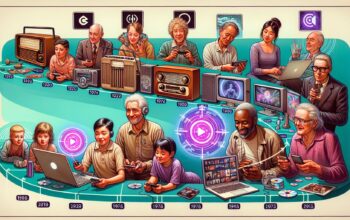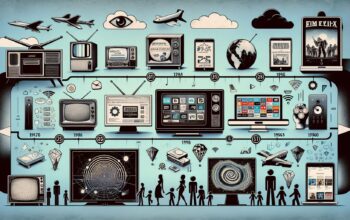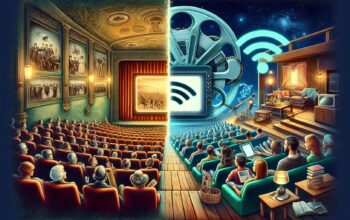
The dawn of the digital era brought forth an immense transformation in various aspects of human life, with a significant shift observed in the realm of entertainment. In the 21st century, entertainment has transcended from a mere pass-time activity to an integral part of daily routine. The queues outside theatres, radio broadcasts, or the thick clouds of anticipation around the latest films on television have all been largely swept away by the wave of digital streaming services.
The lifespan of videotapes, DVDs, and even television has arguably been cut short by the meteoric rise of streaming platforms, changing the face of global entertainment dramatically. The journey from cable subscriptions to YouTube, and then onto the colossal streaming platforms like Netflix, Amazon Prime and Hulu, has been nothing short of revolutionary.
Netflix, the universally recognized streaming giant, took a major leap of faith back in 2007, when it transitioned from a DVD-by-mail service to an internet-based streaming service. The move proved to be a blueprint for success, as Netflix currently has over 200 million subscribers globally, affirming its tremendous impact on the cultural diet of entertainment consumers.
The growth of streaming platforms has not only altered viewership trends but also spurred changes in content production. The traditional model of delivering an entire season’s worth of episodes at once has been challenged by the weekly episode roll-out strategy, reintroducing suspense and anticipation in the era of ‘binge-watching’.
Streaming services have also opened doors to a diverse array of content, shattering geographical boundaries and introducing audiences to narratives from different cultures and backgrounds. Global hits like “Money Heist”, a Spanish series, or “Parasite”, a South Korean film, are perfect exemplification of this shift toward global narratives.
Critics posit that this digital dominance may lead to the burgeoning of a streaming bubble. However, these platforms show no signs of slowing down, especially with recent expansions into new domains such as gaming and live sports streaming.
The impact of streaming services extends beyond content consumption and is gradually seeping into the roots of traditional media formats. The television industry, for instance, is facing an existential crisis and is forced to innovate to stand against the streaming tide. The cinema industry too has transformed, focusing on creating a unique and immersive experience in an effort to compete with the comfort and accessibility of streaming services.
As we look toward the future, it seems apparent that streaming services will continue to evolve, expand, and consolidate their hold on the entertainment industry. Fueled by technological advancements, the possibilities for these platforms continue to grow, expanding from virtual reality streaming to AI-aided personalized content.
In conclusion, the information age has irrevocably revolutionized our entertainment consumption habits. Streaming platforms have not only brought about a paradigm shift in content production and viewership trends but also transformed cultural narratives and threatened longstanding entertainment formats. Involving viewers in the narrative, breaking societal taboos, and producing diversified content has been central to the success of these revolutionary platforms. As the lines between traditional and digital media blur, the world waits with bated breath to see what the future of entertainment holds. One thing is certain: streaming is not just an alternative, it’s the future.



